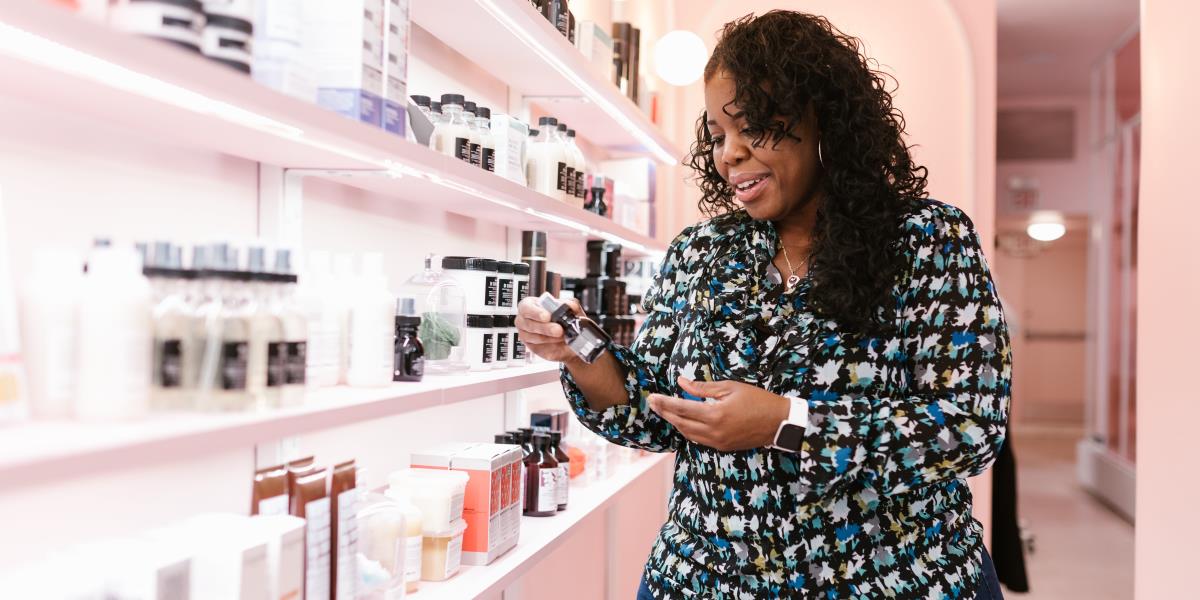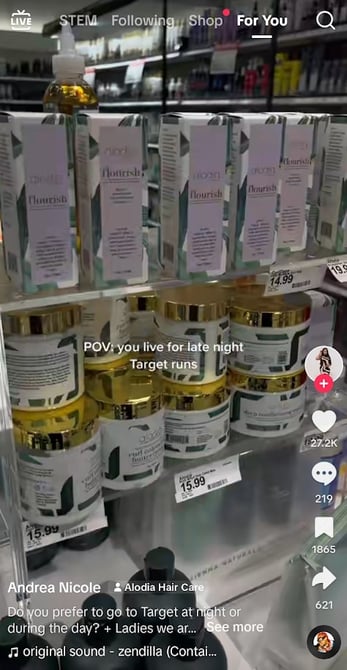Influencer Marketing Brief Template & How to Write Your Own
Influencer briefs are make-or-break for brands that want authentic content. Here’s how to write yours, plus our influencer brief template to get you...
Influencer activations can turn digital awareness into in-store foot traffic. Below we share retail influencer marketing examples and best practices for brands.


Hot take: more brands should send retail influencers to promote products in-store.
And sure, retail activations are a big to-do without a platform to coordinate them.
But the benefits are massive for brands that pull them off consistently:


If in-store activations are on your radar, you’re (literally) in good company. We’ve seen a 150% lift in retail influencer campaigns with our platform.
What do influencer activations look like though? What makes “good” in-store content?
These retail influencer marketing examples and tips dig into these questions and more!
TLDR? 👩🏫
Skip to Section 👇 |
The recent retail influencer boom is a reminder that you shouldn't limit your influencer strategy to ecommerce.
Especially if your brand is currently featured in major retailers (or is about to be).
Consider also how more and more in-store promotions include creators and UGC. The rise in retail brands driving in-store content with our software is telling, too.
Let’s look at some examples of retail activations with influencers done right. We’ll focus on two of the biggest verticals where in-store content shines: beauty and food.
It’s no secret that beauty brands are at the forefront of most influencer promotions.
And that includes consistent retail activations to stay on beauty buyers’ radars.
Because shelf space is limited and competition is fierce.
The challenge? Different types of beauty products drive demand at different stores. From Ulta and Sephora to Target and CVS, in-store beauty content is anything but one-size-fits-all.
However, influencer activations with haul videos are fair game for any product.
The concept is simple: send creators in-store to show off your latest launches in person.
Haul videos are the bread and butter of beauty brands already. The popularity of #ComeShoppingWithMe content (hint: 700+ million views on TikTok) highlights how shoppers love to virtually tag along with creators and learn about new cosmetics.
This post for an influencer activation for Alodia Beauty highlights how something as simple as a Target run can result in engaging in-store beauty content.


Note that this creator matched with the brand via Statusphere’s influencer matchmaking platform. Earning 27,000+ Likes and 1,800 Saves with <6,000 followers, this is a reminder that “smaller” creators can build big awareness for retail brands.
Beyond high engagement, here’s why this is an example of in-store content done right:

Another trademark of in-store beauty activations is picking up products in-store and then demoing them at home. This is a prime way to show how a product can fit into someone’s skincare routine. The post below for Yuni Beauty is a great example.


Note how the creator prominently shows off the product packaging from multiple angles in-store. The subtitle featuring the brand’s name is a smart touch to keep the brand top-of-mind for viewers who may have not tried them out yet. Finally, showing viewers how to use the scrub at home makes the video more relatable and makes the product more “real.”
Both of these in-store activations highlight the value of powering your retail campaigns with micro-influencers.
Doing so means you can generate authentic content at scale while also earning word-of-mouth.
That’s because micro-influencers are typically very engaged with their audiences. They’ll consistently answer questions, provide feedback and recommend products to commenters. This does double duty of building social proof and driving the interactions that social algorithms want to see.

Consider also that shoppers might be hesitant to try new cosmetics without reviews or “official” star ratings. Authentic influencer content and comments provide much-needed social proof to make shoppers confident enough to purchase something new.
That’s part of why micro-influencer activations are particularly powerful for beauty product launches. Not to mention that the more influencers you send in-store, the wider range of products and audiences you can promote during a single campaign.
Think about it: it's much easier to show off variants and complementary products when you have 100+ creators promoting your launch versus a handful.
In our experience, food and beverage brands are among the biggest winners with retail influencers.
Grocery products lend themselves to in-store activations for a few key reasons:
Having a wide variety of content is a key piece of UGC advertising. The more in-store content you generate, the more you understand what performs best. You also learn what has potential as an influencer ad on Instagram or TikTok.
We've found that oftentimes the videos that do well are the ones you'd least expect. Check out this recipe video for Kosterina’s in-store activation which managed to turn some heads.


No matter how you feel about the idea of olive oil ice cream, this is the exact type of post that’s tailor-made for Instagram and TikTok. Here’s a few things that this influencer activation did right:
Again, one of the biggest benefits of working with a high volume of smaller creators is content variety. Chances are you'll get a mix of more "traditional" influencer content (see below) alongside a few pieces that take some creative liberties. That's totally okay!

Beyond creative content, keep in mind that in-store activations are sometimes a necessity for food brands that want to work with influencers at all. Case in point: frozen food items where fulfillment would be too complicated, costly or downright impossible.
This was the case for Afia Foods who used Statusphere’s platform to promote their frozen Meditterian cuisine with recipe content. Their retail influencer marketing campaign in stores including Sprouts and Whole Foods resulted in:


Read the brand's full story and learn about how Statusphere supports retail launches here.
To wrap things up, let’s recap key considerations for brands using creators in retail activations.
Pssst! We recently wrote an e-book all about promoting retail product launches with influencers. Check it out for even more insight into why more brands are requesting in-store activations.
Retail support from influencers isn’t just about word-of-mouth. Consistent in-store influencer marketing campaigns are key to staying on the shelves long-term.
Anything you can do to show your channel partners that you’re taking active steps to drive foot traffic is a plus. Combining retail support with an always-on strategy means ongoing awareness for product launches.
The idea of coordinating a retail activation with 50-100+ influencers is obviously daunting. That’s why more retail brands use Statusphere for influencer activations at scale.
Our micro-influencer marketing platform can generate rights-ready content at your priority retailers. You also can send influencers to specific retail locations via geo-targeting. These features help brands like retail activations in a matter of weeks instead of months.

Oh, and we automatically match your brand with vetted creators to save time on all of the above.
Want to see how our software works? Get in touch with one of our experts to learn how we can boost your brand’s retail presence with influencer content at scale.
This article was first published in November 2019. It was last updated November 16, 2023.
Influencer briefs are make-or-break for brands that want authentic content. Here’s how to write yours, plus our influencer brief template to get you...
Gifting notes add a personal touch to your brand's influencer packages. Here's how to write your own influencer gifting note plus examples to inspire...
Done right, gifting products to influencers drives brand awareness and promotional UGC for brands. Here are nine influencer gifting examples to...
Be the first to know about the latest tools, trends and strategies in influencer marketing for brands.